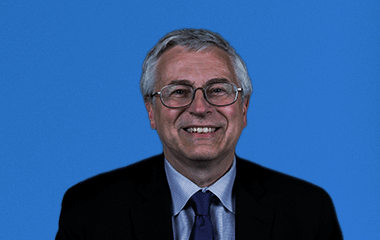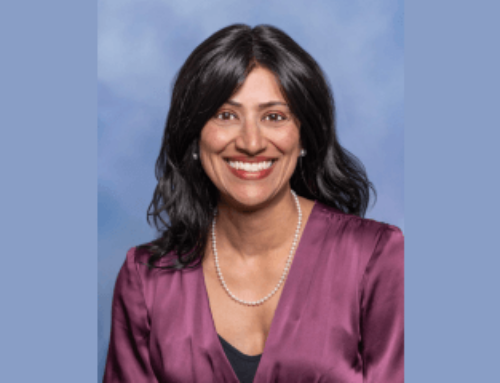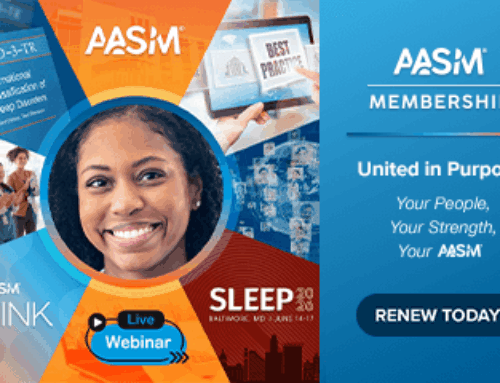James A. Rowley, MD, completed his term as president of the American Academy of Sleep Medicine (AASM) board of directors on Monday, June 3, 2024, during the AASM annual membership meeting, which took place in Houston as part of the SLEEP 2024 annual meeting of the Associated Professional Sleep Societies (APSS).
This is an excerpt of the remarks that he presented during the membership meeting.
Remarks by Dr. James A. Rowley
it is my honor to present to you the report of the Academy president. Being president this past year has truly been one of the great honors of my life. Like many presidents before me, I cannot believe how fast it has gone by. I believe we have had a productive year, with a focus on strategic vision that will continue to move the Academy forward in this challenging and changing world of health care in general, and sleep medicine in particular. Here are brief updates on the most significant developments.
The board of directors approved a new three-year strategic plan that will support the Academy’s mission of advancing sleep care and enhancing sleep health to improve lives. As part of this process, we adopted a new vision, “Sleep and circadian care is fundamental to health care.” This statement emphasizes that the work our members do every day is vital and foundational for the success of our health care system. The strategic plan comprises three strategic goals focusing on:
- Sleep medicine awareness, by which we will engage in advocacy to promote the value of sleep medicine;
- Practice success, by which we will ensure that sleep practices in diverse settings can deliver quality care and innovate to achieve better outcomes for patients; and
- Technology integration, by which we will guide sleep team professionals in integrating new and emerging technologies in clinical care.
The Board of Directors also approved a strategic plan for the Journal of Clinical Sleep Medicine and began the search process to evaluate candidates to be the next editor-in-chief. Our plan affirms the journal as the leading source for scientific and authoritative guidance in sleep medicine, and the Academy will continue to elevate JCSM as the premier publication for human sleep and circadian science.
This month the Academy is submitting a code change application to the American Medical Association Current Procedural Terminology Editorial Panel. We are proposing to update the CPT home sleep apnea test codes, which no longer capture all the diagnostic sleep testing technologies that are being used outside of the sleep center. New, FDA-authorized technologies, with varying levels of complexity, have been developed since the previous establishment of the unattended sleep test code family. This proposal is a key step forward to ensure that HSAT codes accurately reflect the services provided by sleep clinicians. We’ve been working closely on this issue with our colleagues at ATS, CHEST, and AAN, and I am grateful for the outstanding work by our health policy staff and our AMA CPT Advisors, Larry Epstein and Vik Jain.
Last fall, the Academy published a new permanent standard time position statement and launched a new Coalition for Permanent Standard Time. We are advocating for the introduction and adoption of federal legislation making standard time permanent across the U.S. Along with the Academy, the founding organizational members of the coalition are the National Sleep Foundation, Save Standard Time, Sleep Research Society, and Society for Research on Biological Rhythms. I am grateful for the support of these organizations and for the work of the coalition co-chairs, Karin Johnson and Jay Pea.
In November, the Academy hosted a health policy Hill Day to advocate for physician payment reform. Then in April, more than 30 members converged on Capitol Hill for the largest Hill Day ever held by the Academy. They met with staff from 45 congressional offices and advocated for sleep-related legislative priorities such as permanent standard time and telehealth reimbursement. It is gratifying to see so many members who are willing to invest their time in advocating for our field.
A problem facing many sleep facilities today is the national shortage of sleep technologists, and our presidential committee has been working hard to identify barriers that contributed to this crisis. This joint committee comprises representatives from the Academy, AAST, BRPT, and the CoA-PSG. This summer it will propose recommendations to help rebuild the sleep tech workforce.
The Board of Directors gave approval to proceed with a new compensation analysis of physicians, advanced practice providers, and sleep technologists. So much has changed since the Academy’s 2018 compensation survey report, and it is important for us to give members reliable benchmarks that reflect current realities. Members will be surveyed over the summer, and the results should be available later this year.
To promote standardized training and onboarding for advanced practice providers in sleep medicine, the Academy has developed a new certificate program, “ASTEP Introduction to Clinical Sleep Medicine for APPs.” It will provide an intensive review of the essentials of sleep medicine and guide advanced practice providers in launching a career in the sleep field.
An Academy task force has developed a new clinical practice guideline to provide updated recommendations for the treatment of RLS and PLMD in adult and pediatric patients. I am grateful for all the members who provided feedback after it was posted for public comment in March. The task force is reviewing these comments, making revisions, and preparing a final draft for publication later this year.
Finally, the Board of Directors agreed to help sponsor the new consensus study, “Sleep Across the Lifespan: Implications for Health and Research,” which has been proposed by the National Academies of Sciences, Engineering, and Medicine. If the National Academies receives all of the funding it needs, then the study will help update the influential 2006 report from the Institute of Medicine. We believe this project will support our vision that sleep and circadian care is fundamental to health care.
Of course, none of these achievements would have been possible without the support of our dedicated volunteers, the Academy staff, and my family.
It truly has been an honor to serve as your president this year, and I know that the Academy will be in good hands under the leadership of Eric Olson in the year ahead. Thank you.





